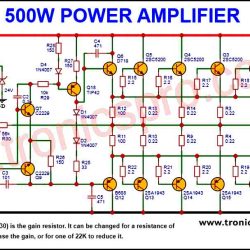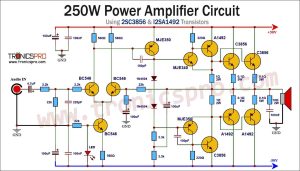Introduction
Battery level indicators are essential tools that help monitor the battery life of various devices, ensuring that they are always powered up and ready for use. While there are many commercial battery level indicators available, creating your own indicator can be a rewarding and cost-effective option. In this article, we will explore how to make a battery level indicator using C945 transistors, along with a brief description of the C945 transistor, the 11v Zener diode, 1n4007 and 1n4148 diode.
Explanation of Battery Level Indicator Using C945
C945 Transistor
The C945 transistor is a widely used general-purpose NPN transistor that is commonly employed in low power audio applications, signal amplification, and switching applications. It is characterized by its high current gain and low collector-emitter saturation voltage, making it suitable for various circuit designs.
This silicon transistor has three terminals – the base (B), the emitter (E), and the collector (C). The input current flows into the base, controlling the output current from the collector to the emitter. It is important to note that the current gain, or beta value (hfe), may vary between different batches and manufacturers of the C945 transistor. Therefore, it is crucial to consult the datasheet specific to the transistor you are using to ensure accurate circuit design.
11V Zener Diode
A Zener diode is a specialized PN-junction diode that operates in the reverse-biased mode and is designed to maintain a constant voltage value across its terminals. The 11V Zener diode, as the name suggests, is a Zener diode with a breakdown voltage of 11 volts. This means that when the voltage across the diode exceeds the breakdown voltage of 11 volts, it starts conducting in the reverse direction, effectively maintaining a stable voltage of 11 volts.
The Zener diode is commonly employed as a voltage reference or voltage regulator in various electronic circuits. In the battery level indicator circuit, the 11V Zener diode serves as a reference voltage for comparing the battery voltage, allowing us to determine the battery level.
1N4007 Diode:
The 1N4007 diode is a widely used rectifier diode that belongs to the 1N400x series. It is a general-purpose diode designed for rectification of alternating current (AC) to direct current (DC). The 1N4007 diode is a popular choice due to its high current rating, low forward voltage drop, and robust construction.
Specifications of 1N4007 Diode:
Maximum Average Forward Current: 1A
Maximum Peak Forward Surge Current: 30A
Maximum Reverse Voltage: 1000V
Forward Voltage Drop: Typically 0.7V
Reverse Recovery Time: <2μs
Package Type: DO-41 or Axial lead diode
1N4148 Diode:
The 1N4148 diode is a small, fast-switching diode widely used in signal and small-signal applications. It is a high-speed switching diode that provides fast switching times and low forward voltage drop, making it suitable for various applications such as rectification, clipping, clamping, and high-speed switching.
Specifications of 1N4148 Diode:
Maximum Continuous Forward Current: 200mA
Maximum Peak Forward Surge Current: 2A
Maximum Reverse Voltage: 100V
Forward Voltage Drop: Typically 0.6V
Reverse Recovery Time: <4ns
Package Type: DO-35 or Axial lead diode
Both the 1N4007 and 1N4148 diodes have their own distinct characteristics and applications. The 1N4007 is primarily used for higher power rectification applications, while the 1N4148 is more suitable for signal-level and low-power switching applications due to its fast response time

Circuit Diagram of Battery Level Indicator Using C945
This project can be designed using a few basic components. The circuit diagram of this project is shown below.
More Circuit Layouts


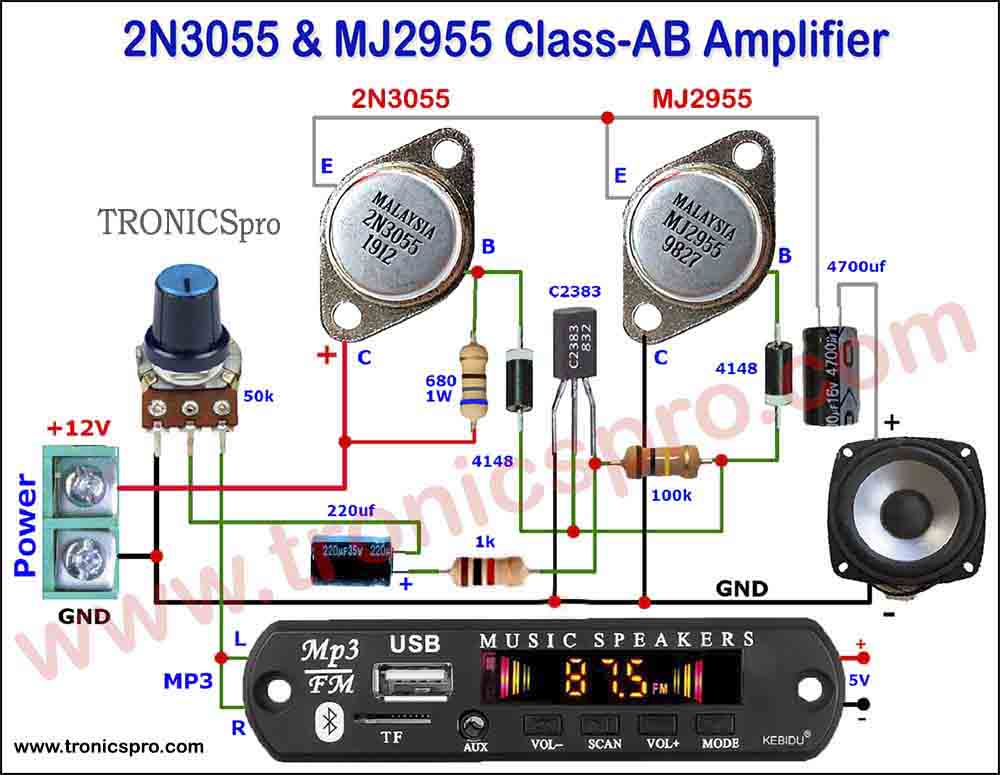

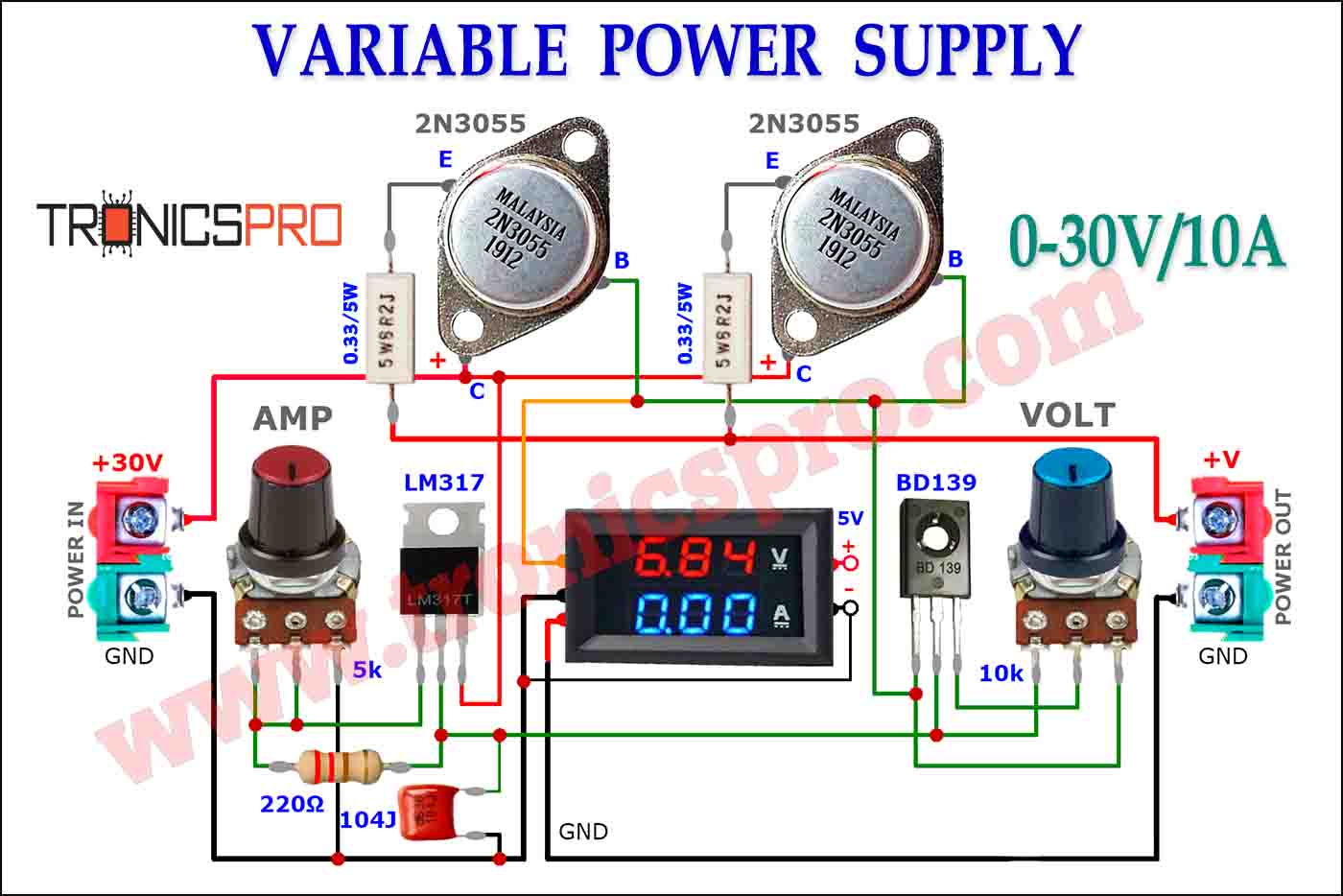

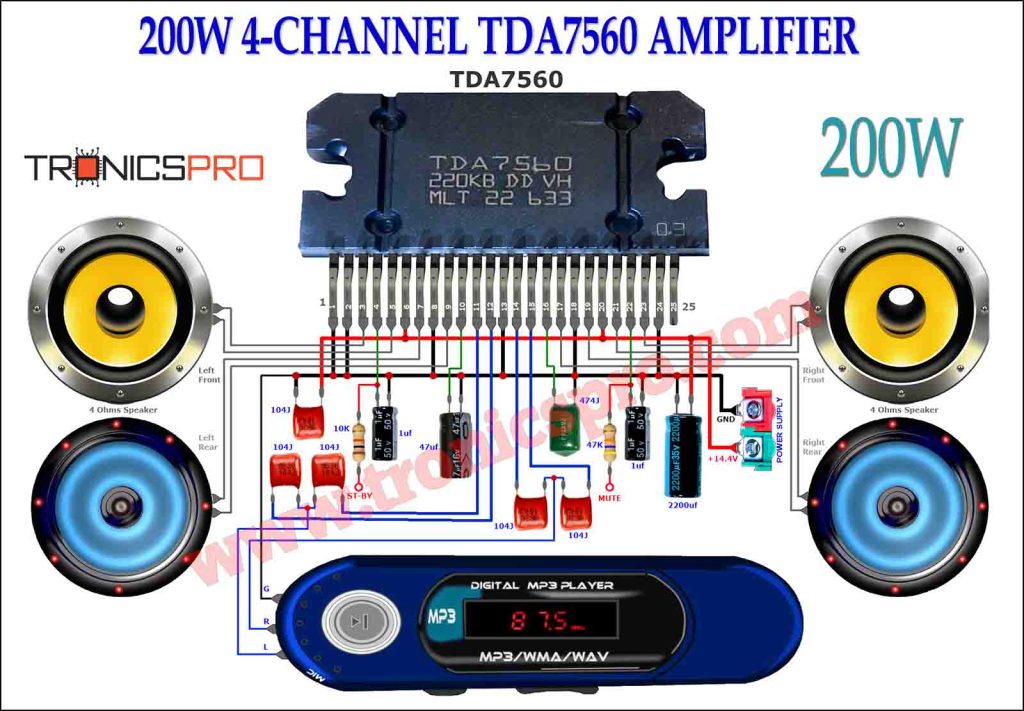

Components List of Battery Level Indicator Using C945
Following is the list of all components used in this project:
- 5X TRANSISTORS C945 OR C828
- 1X 11V ZENER DIODE
- 5x DIODES ( 1N4007 OR 1N4148 )
- 5x LEDs
- 5X 10K RESISTORS
- 5X 1k RESISTORS
- 1x PIECE of VERO BOARD
- SOME JUMPER WIRES
Building the Battery Level Indicator Circuit
Now that we have a basic understanding of the C945 transistor, 11V Zener diode and the 1n4007 diodes, let’s proceed to build the battery level indicator circuit.
The circuit consists of four main components – the C945 transistors, the 11V Zener diode, 1n4007 diodes, and a series of resistors. The resistors are used to divide the voltage and provide appropriate biasing to the transistors.
To begin, gather the necessary components, including a C945 transistor, an 11V Zener diode, three resistors, a battery, and a voltmeter. The resistors can be of any value, but it is recommended to choose high values to minimize power consumption. A complete list of material required for this project, is list above in the ‘Components List’ section above.
- First take 5 pieces of C945 transistors and insert on a piece of vero board. Now join their all pin-1 and connect them to the negative supply.
- Next take 5 pieces of 10k resisters and connect one side of all of them to pin-3 of all 5 C945 transistors.
- Now take 5 pieces of 1n4007 diodes and connect them in series like cathode to anode and place them beside all 10k resisters. Also connect a sixth 10k resister to the empty end cathode of the last 1n4007 diode and the other side of the resister to negative supply ground.
- Connect the empty sides of all 10k resisters one by one separately to anode of all 5 1n4007 diodes as shown in the circuit diagrams provided above.
- Connect an 11v Zener diode anode to the junction of the top first 10k resister and cathode to the positive supply.
- Take 5 pieces of 1k resisters and connect their one side to pin-2 of all 5 C945 transisters.
- Next take 5 LEDs and join their anode to positive supply and connect all cathode pins to the emply side of all five 1k resisters as shown in the circuit diagrams.
Upon completing the connections, the voltmeter should provide a voltage reading proportional to the battery level. As the battery voltage exceeds the 11V Zener diode breakdown voltage, the Zener diode starts conducting, and current flows through the transistor. This current flow is then indicated by the voltmeter, providing a visual representation of the battery level.
Conclusion of Battery Level Indicator Using C945
Building your own battery level indicator using a C945 transistor and an 11V Zener diode is a rewarding and cost-effective way to monitor the battery life of your devices. It allows you to customize the indicator according to your specific needs and ensures that your devices are always powered up and ready for use.
The C945 transistor, with its high current gain and low saturation voltage, is an excellent choice for such applications. Coupled with the 11V Zener diode, which provides a stable reference voltage, the circuit accurately detects the battery level and displays it through the voltmeter.
Remember to consult the datasheet specific to your C945 transistor to ensure accurate circuit design, as the beta value can vary between different batches and manufacturers. Additionally, selecting high-value resistors can help minimize power consumption.
By following the steps outlined in this article, you can easily create your own battery level indicator using C945 and have complete control over your device’s power supply.
More projects, You may like:
- Video Transmitter DIY Homemade FM Radio Transmitter
- Adjustable Power Supply DIY Battery Charger
- 12V-220V 500 Watt inverter DIY Homemade
- 12V-220V H-Bridge Inverter DIY Homemade
- MPPT Solar Charge Controller DIY Homemade
- 18650 battery bank free charge protection module
- D718 B688 Bass Amplifier Homemade DIY
- C5200 Bass Amplifier DIY Homemade with Volume
- DIY LA4440 bass amplifier homemade
- C5200 A1943 TDA2030 Amplifier DIY Homemade
For more project and circuit diagrams, you can go through the Schematics in the main menu where you can find many interesting projects and circuit diagrams like audio amplifier circuits, voltage booster circuit, battery charger circuit and timer circuits etc., which are all beginner circuit projects. Feel free to check them out!
Thanks for visiting the article and watching the video.



















